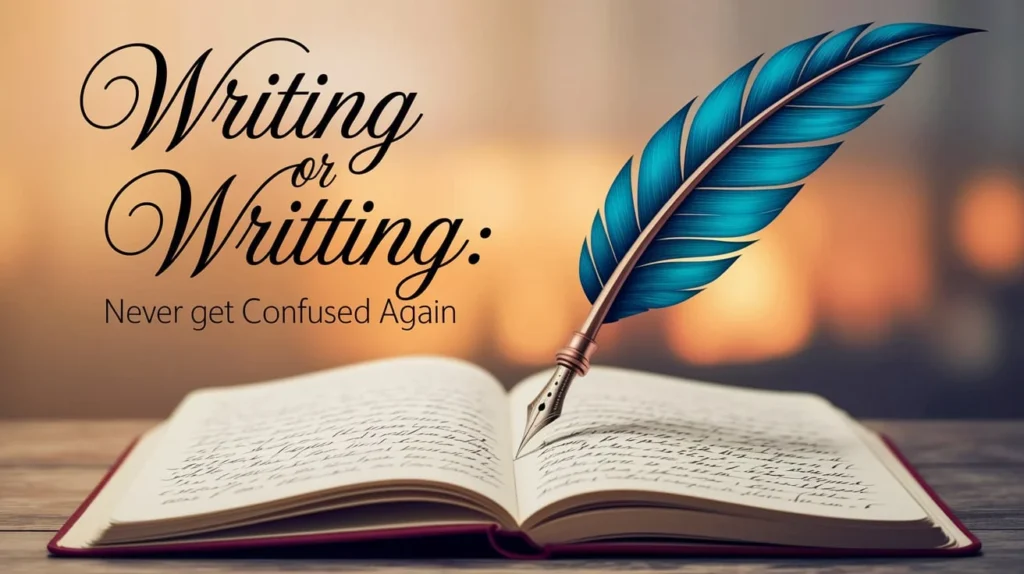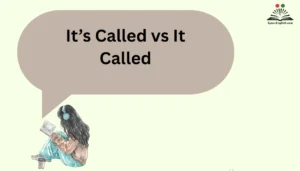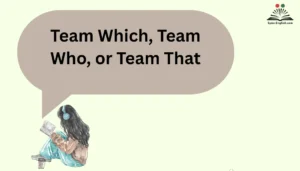If you’ve ever found yourself hesitating between “writing” or “writting,” you’re certainly not alone. It’s a common mistake in the world of English spelling—one that has confused even the most experienced writers and typists. In fact, the error often slips through without notice, especially since both words are so similar in sound and form.
But here’s the deal: one is correct, and the other isn’t. Understanding the difference is more than just a matter of grammar; it’s about refining your language skills and ensuring your writing is as polished and professional as possible.
This article is designed to clear up all confusion once and for all. We’ll dive deep into why so many people make this mistake, explore the rules that govern English spelling, and offer easy-to-follow tips to help you avoid this blunder in the future.
Whether you’re a student, a writer, or someone looking to perfect your grammar, knowing the proper usage of “writing” versus “writting” will give you confidence and ensure your writing is always on point.
Why Is There Confusion Between “Writing” and “Writting”?
The confusion between “writing” or “writting” stems from a simple, yet often misunderstood, rule in English spelling: the doubling of consonants before adding the “-ing” suffix. It’s a rule that is followed in many other words, like “sitting” or “fitting,” which makes the mistake even more tempting. However, there is one key difference when it comes to “writing”—the syllable stress.
English words that follow this rule tend to double the final consonant if the last syllable is stressed. However, when the first syllable is stressed, the consonant is not doubled. Let’s break that down:
- Sit → Sitting (stress on the second syllable)
- Fitting (stress on the first syllable)
- Write → Writing (stress on the first syllable, no double consonant)
Because of this phonetic pattern, it’s easy to see why people might think “writting” is correct. But once you understand this rule, the confusion disappears.
“Writing” or “Writting”: Which Spelling Is Correct?
The correct spelling is “writing”—no double “t” here! Despite the common mistake, “writting” is considered grammatically incorrect. It’s a mistake that people often make because of the patterns in other words that require doubling the final consonant.
Let’s clarify this with a quick reference:
| Word | Correct? | Reason |
| Writing | ✅ Yes | Follows the rule for unstressed final syllable |
| Writting | ❌ No | Incorrect double consonant (should be “writing”) |
So, if you’ve been spelling it “writting”—stop! The only correct form is “writing”.
Why “Writting” Is Incorrect: The Grammar Rule Behind It
The rule behind the confusion is simple but important: double the final consonant only if the last syllable is stressed. In the case of “write” and its form “writing,” the stress falls on the first syllable, not the second.
Let’s break it down further:
- When you say “writing,” the stress is on “writ,” the first syllable. Therefore, no need to double the consonant.
- If we compare it to words like “sitting” or “fitting,” the stress falls on the second syllable (the “sit” or “fit” part). Hence, we double the final consonant.
Here’s a quick list of other verbs that follow this rule:
| Verb | -ing Form |
| Write | Writing |
| Hope | Hoping |
| Drive | Driving |
| Type | Typing |
| Bake | Baking |
Understanding this stress pattern is the key to avoiding “writting.” If you remember that the stress is on the first syllable of “write,” you’ll never make the mistake again.
What Does “Writing” Really Mean?
The word “writing” has several meanings, depending on the context in which it’s used. Let’s explore these meanings more deeply:
- The act of forming letters or words on a surface:
- This is the most basic definition. Writing can refer to any form of manual or digital creation of text.
- Example: She spent the afternoon writing in her journal.
- The act of composing text:
- Writing is also the process of creating content, whether it’s a book, an essay, or a letter.
- Example: He enjoys writing fiction in his spare time.
- Written content in general:
- This could refer to articles, essays, reports, and any kind of written communication.
- Example: The magazine is known for its high-quality writing.
- The profession of being a writer:
- A writer’s occupation or craft is often referred to as writing.
- Example: She makes a living through her writing.
Each of these meanings provides a unique perspective on what writing actually is, making it a versatile and important skill.
Words That Follow the Same Spelling Pattern as “Writing”
Just like “writing,” many other words follow a similar pattern when forming the -ing suffix. These words do not require doubling the final consonant because the stress falls on the first syllable. Here’s a quick look at some common examples:
| Verb | -ing Form |
| Write | Writing |
| Hope | Hoping |
| Drive | Driving |
| Type | Typing |
| Bake | Baking |
How to Remember the Rule:
If the stress falls on the first syllable, don’t double the consonant. Words like “writing” follow this rule. However, if the stress falls on the last syllable, you double the consonant, as in “sitting” or “fitting.”
Synonyms for “Writing” and When to Use Them
While “writing” is a widely used term, there are several other words that can be used in specific contexts to convey similar meanings. Here are some common synonyms for “writing” and how to use them:
- Composing: Often used for music or formal writing.
- Example: She’s composing a new symphony.
- Jotting: A more informal term for writing something down quickly.
- Example: I was just jotting down a few notes for the meeting.
- Drafting: Refers to the process of preparing a rough version of a document.
- Example: He spent the afternoon drafting his proposal.
- Scribing: This term is often used in historical or medical contexts, referring to the act of writing by hand.
- Example: The monk spent his days scribing manuscripts.
Each of these synonyms provides a more nuanced version of the act of writing, and choosing the right word can add depth to your writing style.
Examples of “Writing” Used in Sentences
Here are a few example sentences that show how “writing” can be used in different contexts:
- Formal: He is currently writing an article about the impact of climate change.
- Casual: I’ve been writing in my journal every day to keep track of my thoughts.
- Reflective: Writing has always been a way for me to express my deepest emotions.
- Creative: She spends hours writing the plot for her next novel.
| Sentence | Tense | Tone | Context |
| He is writing an article. | Present | Neutral | Professional |
| I’ve been writing all day. | Present Perfect Continuous | Casual | Personal |
| Writing can be therapeutic. | Gerund | Reflective | General |
Etymology of “Writing”
Understanding the etymology of “writing” can help us better appreciate its roots and why it’s spelled the way it is. The word comes from Old English “writan”, meaning “to score, scratch, or draw.” Over time, the meaning expanded to include the act of creating letters and words in various forms, eventually leading to its modern usage.
Here’s a quick breakdown of the word’s evolution:
- Old English: writan (to score or draw marks)
- Middle English: writen (to write or inscribe)
- Modern English: Writing (the act of creating written text)
Interestingly, the word “write” shares its roots with several languages, including Old Norse and Dutch, where similar terms also mean “to inscribe or draw.”
Common Misspellings Like “Writting” to Watch Out For
While “writting” is a common mistake, there are several other frequently misspelled verbs that follow similar patterns. Here’s a list of words to watch out for:
| Verb | Correct Form | Incorrect Form |
| Stop | Stopping | Stoping |
| Plan | Planning | Plannning |
| Begin | Beginning | Begining |
How to Avoid Spelling Mistakes Like “Writting”
Here are some simple strategies to help you avoid common spelling errors like “writting”:
- Proofread your writing carefully.
- Use spell check, but don’t rely solely on it.
- Read your writing aloud—sometimes errors are easier to spot when you hear them.
- Practice spelling with tools like flashcards or apps that help reinforce proper spelling.
- Consider using writing tools like Grammarly or Hemingway to catch mistakes as you type.
Conclusion: You’ll Never Confuse “Writing” with “Writting” Again
In conclusion, knowing that “writing” is the correct spelling and “writting” is not is just the beginning. Now that you understand the underlying rules of English spelling, the confusion should be a thing of the past. With a solid understanding of why this mistake happens and how to avoid it, you can write confidently, knowing that your spelling is always on point.
Take these tips with you the next time you’re typing an email, writing a report, or drafting your novel. As a writer, mastering even the smallest details can help you stand out, and getting “writing” right is a great place to start.
Remember: writing is always the way to go—no double “t” needed!




